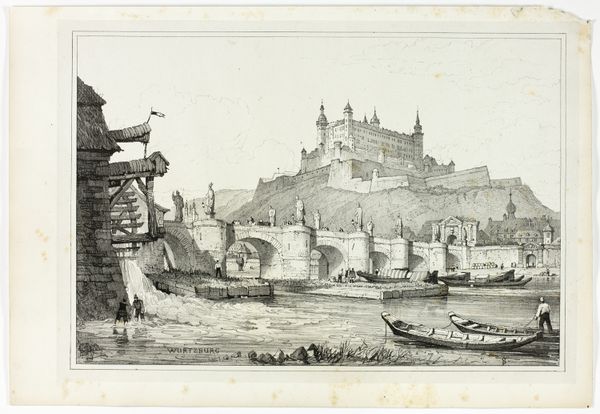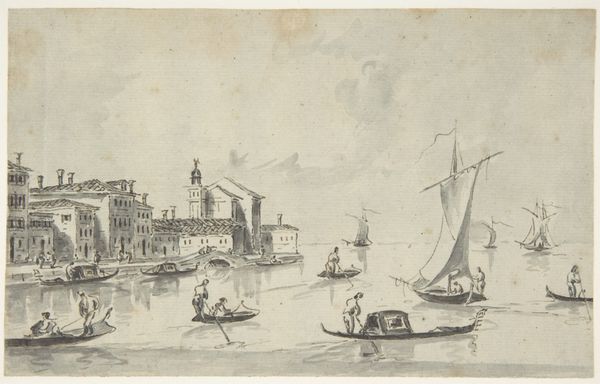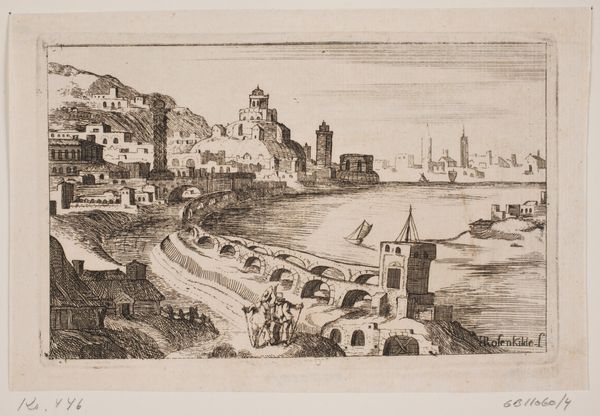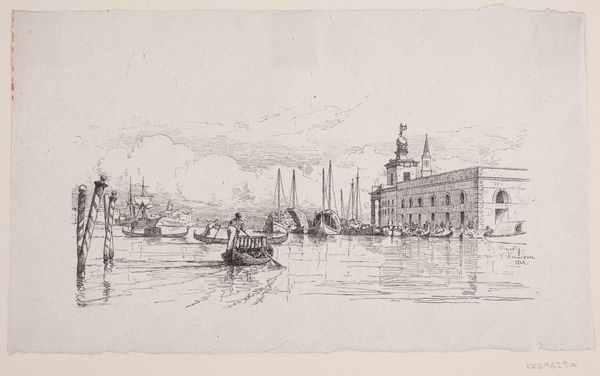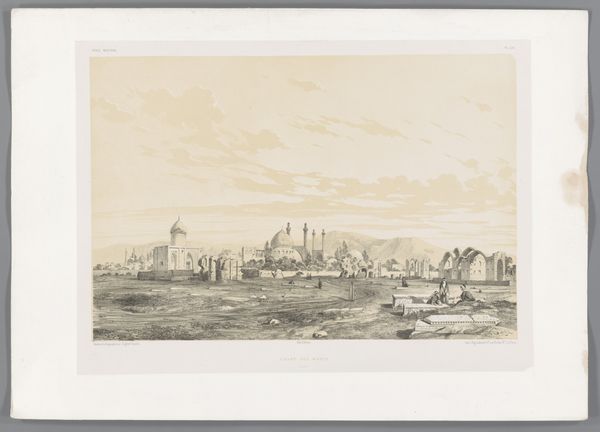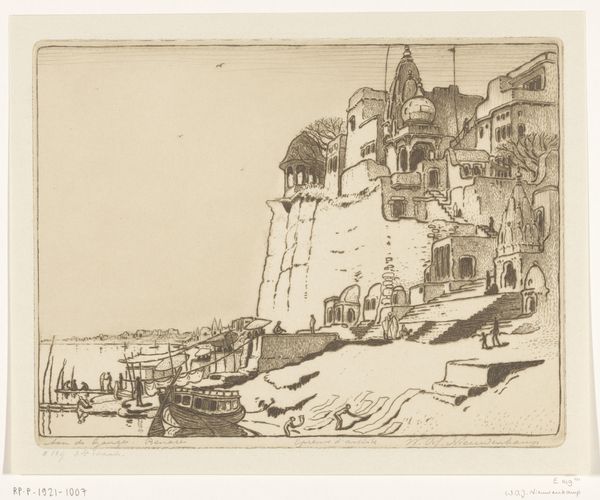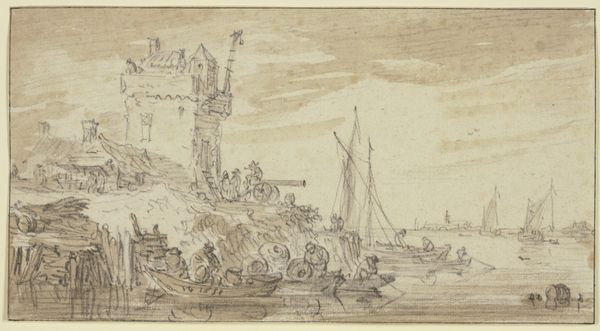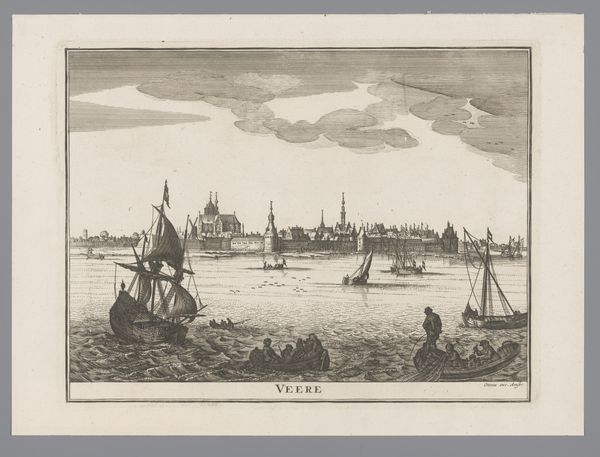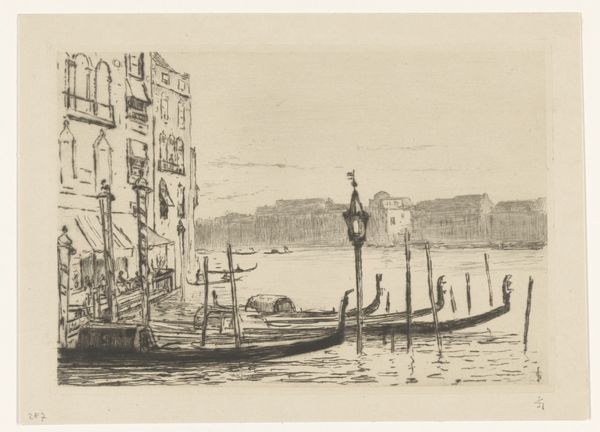
drawing, lithograph, print, etching, paper, engraving
#
drawing
#
lithograph
# print
#
etching
#
etching
#
paper
#
romanticism
#
cityscape
#
engraving
Dimensions: 290 × 425 mm (image); 310 × 445 mm (primary support); 345 × 500 mm (secondary support)
Copyright: Public Domain
Curator: Take a look at "Cologne," a print made in 1833 by Samuel Prout. What jumps out at you first? Editor: It’s incredibly detailed. Almost painstakingly so. But it also feels…static. Like a stage set more than a bustling port city. Is it etching, engraving, maybe a bit of both? All those cross-hatched lines… Curator: All those techniques and then some. It's lithograph and etching, with some engraving thrown in. The architecture has such solidity—the way Prout renders the textures of stone. You almost forget it's all just ink on paper. I find the spire in the distance rather striking. Editor: You're right, the architecture *is* impressive. And think about the labour involved. All those processes—the lithographic stone, the metal plates. It's a real investment in depicting a place. Do you think Prout visited Cologne? Curator: He did, yes, Prout was quite fond of architectural subjects; there are so many works showcasing architectural details, even urban scenes. This almost makes me wish to step into the print and experience what Prout saw, yet through his eyes. It's quite intimate. Editor: I’m intrigued by the Romantic style of this print, and yet I find myself focusing on the raw materials—the paper, the inks, the tools, the sheer hours of labor. The means by which we got this image. Look how the laboring figures become dwarfed. What do we actually take away from an artwork like this? Curator: It gives pause, certainly. A romanticized version of industry. As we approach the end of our conversation about this intriguing piece by Prout, one last thought floats by. Do you believe the artist succeeded at blending these aspects into an emotional form? Editor: Perhaps, or at least revealing them intertwined whether intentional or not. These glimpses remind us of the layers of construction. Art, cities, economies…all built on tangible, material processes. And maybe some nostalgia along the way, too.
Comments
No comments
Be the first to comment and join the conversation on the ultimate creative platform.

